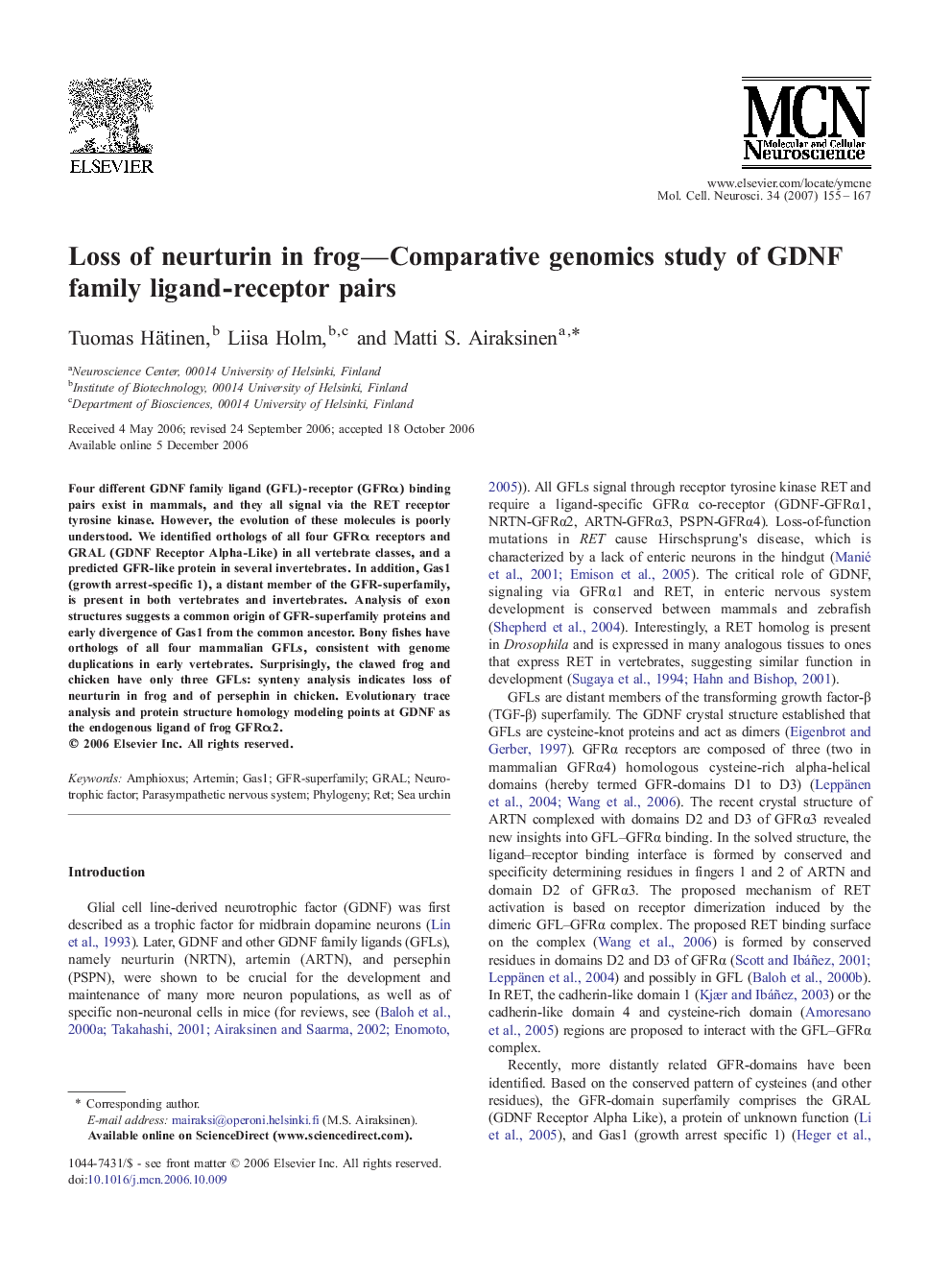| Article ID | Journal | Published Year | Pages | File Type |
|---|---|---|---|---|
| 2199305 | Molecular and Cellular Neuroscience | 2007 | 13 Pages |
Four different GDNF family ligand (GFL)-receptor (GFRα) binding pairs exist in mammals, and they all signal via the RET receptor tyrosine kinase. However, the evolution of these molecules is poorly understood. We identified orthologs of all four GFRα receptors and GRAL (GDNF Receptor Alpha-Like) in all vertebrate classes, and a predicted GFR-like protein in several invertebrates. In addition, Gas1 (growth arrest-specific 1), a distant member of the GFR-superfamily, is present in both vertebrates and invertebrates. Analysis of exon structures suggests a common origin of GFR-superfamily proteins and early divergence of Gas1 from the common ancestor. Bony fishes have orthologs of all four mammalian GFLs, consistent with genome duplications in early vertebrates. Surprisingly, the clawed frog and chicken have only three GFLs: synteny analysis indicates loss of neurturin in frog and of persephin in chicken. Evolutionary trace analysis and protein structure homology modeling points at GDNF as the endogenous ligand of frog GFRα2.
